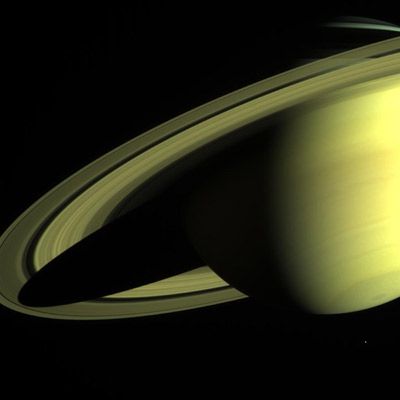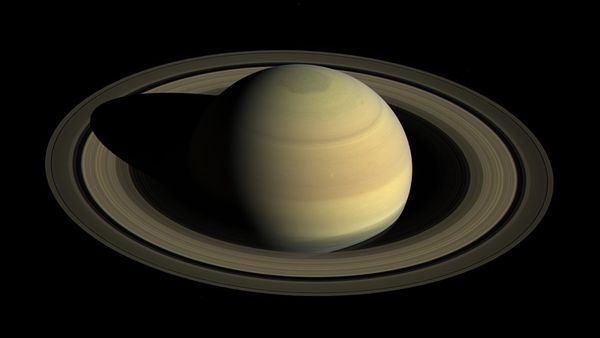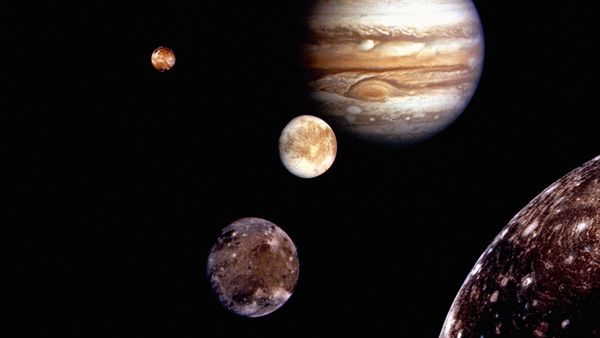While Jupiter is known for its four large Galilean moons (so named because they were observed by Galileo with his 17th century telescope), two of Saturn's major satellites have drawn astronomers' attention: Titan and Enceladus.
The Mighty Titan
Titan is an ocean moon, meaning it has subsurface oceans of liquid water. It's the planet's largest moon, known for its thick atmosphere and methane lakes. Titan is also the second largest moon in the solar system, bigger than the planet Mercury and Earth's moon.
Thanks to NASA's Cassini mission, we now know more about the unique features of this giant moon, which include an Earth-like landscape with dunes, rivers and a possible subsurface ocean, making it a prime target for future exploration.
Perhaps most notably, Titan is the only moon with a "substantial" atmosphere, which, like Earth's, contains nitrogen. However, the similarities end there. Titan's dense atmosphere has a pressure 147 times Earth's, an its composition lacks oxygen.
Icy Enceladus
Enceladus is an icy moon known for spraying huge plumes of water up through its atmosphere into space. During the Cassini mission, astronomers were able to sample these geysers, and that's how they discovered the ocean underneath its icy crust.
Enceladus displays a small, icy world with a smooth, bright surface. While predominantly covered in reflective ice, resulting in a brilliant white exterior, the moon also exhibits contrasting darker regions.
Notably, it features distinctive "tiger stripes," which are linear fractures on its surface situated near its south pole. These unique features host active geysers, erupting icy particles and water vapor from beneath the icy crust. These geysers contribute not only to Saturn's E-ring formation but also hint at a subsurface ocean's presence.



